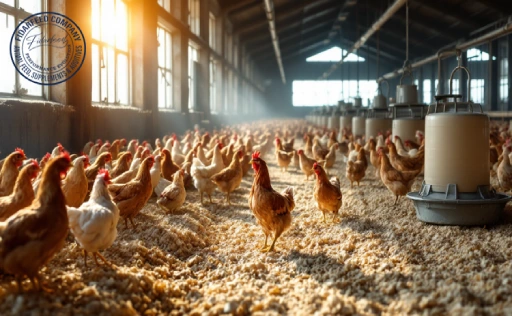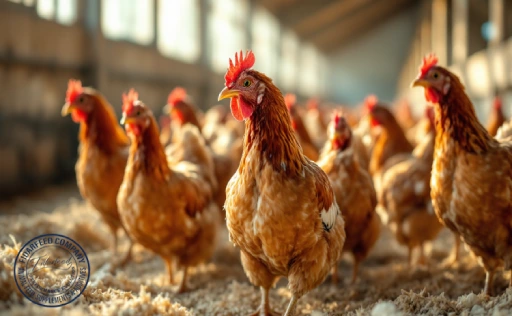
Meat Meal in Animal Feed is more than just a buzzword in today’s animal nutrition circles—it’s a vital component of many balanced feed formulas. Whether you’re raising poultry, swine, cattle, or even fish, understanding the role of meat meal can help you make smarter, more cost-effective choices. With feed prices fluctuating and the demand for high-quality protein sources growing, breeders and feed manufacturers alike are looking for alternatives that check all the boxes—nutritious, safe, sustainable, and affordable. This article breaks down exactly what meat meal is, how it’s produced, and why it continues to earn a respected spot in feed programs across the globe. Read on for insights that are both practical and science-backed, whether you’re new to the field or a seasoned pro.
What Is Meat Meal in Animal Feed? A Straightforward Explanation
At its core, meat meal in animal feed is a highly concentrated protein source derived from the rendering of animal tissues. Unlike fresh meat, it’s a dry product created by grinding and cooking the soft tissues and bones of livestock such as cattle, pigs, and poultry—excluding hair, hooves, horns, and other non-nutritive parts.
Learn more about: Processed Meat Meal
This ingredient plays a pivotal role in feed formulations due to its high protein content and dense nutritional profile. It’s commonly used in diets for monogastric animals like pigs and poultry, but it’s also valuable in aquaculture and pet food. Think of meat meal as a powerhouse supplement—rich in essential amino acids, minerals, and energy.
The Process Behind Meat Meal: From By-Product to Valuable Feed
The journey of meat meal begins in rendering plants, which process leftover animal parts from slaughterhouses that are not intended for human consumption. These by-products go through a high-temperature cooking process called rendering, which removes moisture and separates fat.
Here’s a simplified breakdown:
-
Grinding: Raw materials are first ground into smaller pieces.
-
Cooking: The mixture is cooked at high temperatures (around 115–145°C) to sterilize and dehydrate.
Learn more about: Boost Your Poultry’s Growth with Sustainable, High-Quality Processed Meat Meal
-
Pressing and separation: After cooking, the fat is separated from the solids.
-
Drying and milling: The solid matter is dried and milled into a fine, brownish meal.
The end result? A shelf-stable, nutrient-rich product that transforms waste into a valuable resource, reducing environmental impact while feeding millions of animals worldwide.
Why Meat Meal Matters for Animal Nutrition and Growth
Animals need protein to grow, reproduce, and stay healthy. Meat meal in animal feed delivers this protein in a highly digestible form. It contains 50–60% crude protein on average, plus essential amino acids like lysine and methionine, which are crucial for muscle development and immune function.
Learn more about: Meat and Bone Meal for Poultry: Affordable Alternative to Soybean Meal
Additionally, it supplies important minerals—especially calcium and phosphorus—that support skeletal health and metabolic functions. According to studies published in the Journal of Animal Science, meat meal can effectively replace part of the protein from more expensive sources like soybean meal without compromising performance.
In practical terms, this means healthier animals, better weight gain, and more efficient feed conversion ratios—benefits any breeder can appreciate.
Is Meat Meal Safe? Understanding Quality and Safety Standards
Safety is a valid concern, especially when dealing with animal by-products. However, today’s meat meal is manufactured under strict regulations and quality control systems. Reputable rendering facilities follow guidelines laid out by bodies such as the Association of American Feed Control Officials (AAFCO) and European Food Safety Authority (EFSA).
Key safety measures include:
-
High-temperature cooking to destroy pathogens like Salmonella.
-
Exclusion of ruminant materials where necessary to prevent diseases like BSE (Mad Cow Disease).
-
Regular testing for contaminants such as heavy metals and mycotoxins.
Learn more about: Dorper Sheep Farming: Producing High-Quality Meat for Maximum Profit
The key for breeders is to source meat meal from certified producers with transparent processes and proven quality assurance programs.
Comparing Meat Meal to Other Protein Sources in Animal Feed
Let’s take a quick look at how meat meal compares to other popular feed proteins:
| Protein Source | Crude Protein (%) | Digestibility | Cost | Unique Value |
|---|---|---|---|---|
| Meat Meal | 50–60 | High | Low | Mineral-rich |
| Soybean Meal | 44–48 | Very High | Medium–High | Plant-based, amino-rich |
| Fish Meal | 60–72 | Very High | High | Omega-3 fatty acids |
| Canola Meal | 36–40 | Moderate | Low–Medium | Good fiber content |
Each has its place, but meat meal strikes a strong balance between cost, digestibility, and mineral content, especially for omnivorous species.
Cost-Effectiveness of Meat Meal for Animal Breeders
In the world of animal husbandry, margins can be tight. Meat meal offers a way to stretch your feed budget without sacrificing performance. It’s often 15–30% cheaper than high-quality soybean meal or fish meal.
Learn more about: Finding a Trusted Animal Feed Supplier: Your Ultimate Guide
Real-world case studies from Latin America and Southeast Asia show that integrating meat meal into poultry and pig diets reduced overall feed costs by up to 20%. And because it’s energy-dense, animals often require less feed overall to achieve the same or better results.
How to Use Meat Meal Correctly in Different Animal Diets
Inclusion rates vary depending on the species and production stage. Here are general guidelines:
-
Broilers and turkeys: 4–8% of the total ration
-
Swine (grower-finisher): 5–10%
Learn more about: How to Spot Reliable Animal Feed Manufacturers
-
Aquaculture: 5–15%, depending on species
-
Ruminants: Typically not used due to regulatory restrictions in some regions
Blending meat meal with plant-based proteins ensures a well-rounded amino acid profile. Always consult a nutritionist when making changes to your feed formula.
Environmental Benefits of Using Rendered Products in Feed
Using meat meal is also an environmentally conscious choice. Rendering diverts billions of pounds of waste from landfills and reduces greenhouse gas emissions. In fact, according to the North American Renderers Association, the rendering industry keeps over 50 billion pounds of animal by-products out of the waste stream every year.
Learn more about: Top 10 Benefits of Bulk Animal Feed for Wholesalers
This circular approach to agriculture helps reduce reliance on land-intensive crops and contributes to a more sustainable feed supply chain.
What Breeders Are Saying About Meat Meal in Animal Feed
From independent farmers to large-scale operations, feedback on meat meal is generally positive. One swine producer in Brazil shared that, after replacing 30% of their protein source with meat meal, they saw a 6% improvement in daily weight gain and a significant drop in feed costs.
Learn more about: Key Questions to Ask Your Animal Feed Supplier for Top Results
A poultry farmer in India noted better feather development and higher uniformity in broiler weights. The common thread? When used responsibly, meat meal delivers real, measurable benefits.
Final Thoughts: Is Meat Meal the Right Choice for Your Operation?
Meat meal in animal feed isn’t just a filler ingredient—it’s a smart, science-backed solution for breeders looking to balance nutrition, cost, and sustainability. Its high protein and mineral content, affordability, and long shelf life make it a strong contender for anyone feeding livestock, poultry, or fish.
Like any ingredient, it must be used with care—sourced from trusted suppliers, formulated properly, and adjusted to the species and stage of production. But when done right, it’s a tool that can help you raise healthier animals, lower feed costs, and reduce your environmental footprint.
Have thoughts or questions about using meat meal in your feed program? We’d love to hear from you. Drop a comment, share your experience, or reach out—let’s keep the conversation going!







